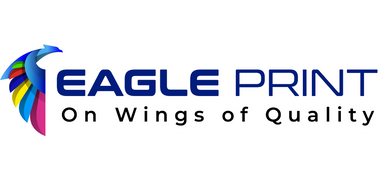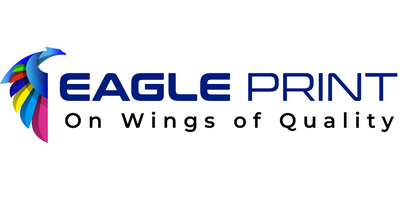HOW DTF TRANSFERS ARE REVOLUTIONIZING THE CUSTOM PRINTING INDUSTRY

How DTF Transfers Are Revolutionizing the Custom Printing Industry
Introduction
In the world of custom printing, staying ahead of trends and technology is essential for businesses and creators alike. One of the most transformative innovations in recent years is DTF transfers (Direct-to-Film transfers). This groundbreaking technique has taken the printing industry by storm, offering unparalleled versatility, vibrant color reproduction, and cost-effective solutions. HOW DTF TRANSFERS ARE REVOLUTIONIZING THE CUSTOM PRINTING INDUSTRY is a topic that highlights the shift in printing methods, providing easier, faster, and more durable results. Whether you're a small business owner, a DIY enthusiast, or part of a large-scale printing operation, understanding DTF transfers can open new doors for creativity and profitability.
In this guide, we’ll explore what DTF transfers are, how they work, their benefits over traditional methods, and dive into HOW DTF TRANSFERS ARE REVOLUTIONIZING THE CUSTOM PRINTING INDUSTRY.
What Is a DTF Transfer?
A DTF transfer (Direct-to-Film) is a printing method where designs are printed onto a special film and then transferred onto fabric using heat and adhesive powder. Unlike traditional methods like screen printing or Direct-to-Garment (DTG) printing, DTF transfers work on a wide variety of fabrics without requiring pre-treatment.
Key Features of DTF Transfers:
- Vibrant, Full-Color Prints: Capable of high-resolution and multi-colored designs.
- No Fabric Limitations: Works on cotton, polyester, blends, nylon, and more.
- Durable & Flexible: Prints that resist cracking, fading, and peeling.
- Cost-Effective: Suitable for both small and large production runs.
How Do DTF Transfers Work?
The DTF transfer process is straightforward but requires specialized equipment and materials to achieve optimal results.
1. Design Creation
- Start with a high-resolution design in CMYK color mode.
- Use graphic design software like Adobe Illustrator or Photoshop for complex graphics.
2. Printing on Film
- A specialized DTF printer prints the design onto a PET film using water-based pigment inks.
- A layer of white ink is applied to ensure the design pops on any fabric color.
3. Adhesive Powder Application
- While the ink is still wet, a fine adhesive powder is applied to the print.
- The film is then shaken to remove excess powder, ensuring an even coating.
4. Curing the Print
- The film passes through a curing oven to melt the adhesive powder, preparing the transfer for heat pressing.
5. Heat Transfer to Fabric
- The film is placed on the fabric and pressed using a heat press at around 300-320°F (150-160°C) for 15-20 seconds.
- After cooling, the film is peeled away, leaving the design perfectly adhered to the fabric.
6. Optional Post-Pressing
- A second press can enhance durability and give the print a softer feel.
Why DTF Transfers Are Revolutionizing Custom Printing
1. Versatility Across Fabrics
Unlike sublimation, which only works on polyester, or DTG, which favors cotton, DTF transfers can be applied to a wide range of fabrics, including:
- Cotton
- Polyester
- Cotton-Poly blends
- Nylon
- Spandex
This makes DTF an all-in-one solution for custom apparel businesses.
2. No Pre-Treatment Needed
DTG printing often requires pre-treating the fabric, adding extra steps and costs. With DTF transfers, there’s no need for pre-treatment, simplifying the process and reducing production time.
3. Cost-Effective for All Orders
Whether you're producing one shirt or a bulk order, DTF transfers are cost-effective. Since the design is printed on film first, it allows for batch production and even storing transfers for later use.
4. Vibrant, Long-Lasting Colors
DTF transfers offer stunning color vibrancy and detail. The prints are durable, stretchable, and resistant to cracking, peeling, and fading even after multiple washes.
5. Eco-Friendly Printing Option
Many DTF transfer inks are water-based, making them a more eco-conscious choice compared to solvent-based inks used in other methods.
DTF Transfers vs. Other Printing Methods
| Feature | DTF Transfers | DTG Printing | Screen Printing | Sublimation |
|---|---|---|---|---|
| Fabric Compatibility | All fabrics | Mostly cotton | All fabrics | Polyester only |
| Color Vibrancy | High | High | Medium | Very High |
| Pre-Treatment Required | No | Yes | No | No |
| Durability | High | Moderate | High | Very High |
| Cost-Effectiveness (Small Orders) | High | Low | Low | High |
| Setup Time | Minimal | Moderate | High | Minimal |
Popular Applications of DTF Transfers
1. Custom Apparel
From t-shirts and hoodies to hats and bags, DTF transfers are perfect for creating high-quality, custom apparel for personal use, businesses, or events.
2. Sports Jerseys and Uniforms
Due to their durability and vibrant colors, DTF transfers are ideal for sports jerseys and uniforms, where frequent washing and wear are common.
3. Promotional Merchandise
Businesses use DTF transfers for promotional items like tote bags, hats, and even aprons, creating effective branding opportunities.
4. DIY and Small Businesses
Crafters and small business owners love DTF transfers because they don't require expensive equipment, making it easier to start a custom printing business.
Where to Buy High-Quality DTF Transfers
If you're looking for premium DTF transfers, check out Eagle DTF Print. They offer:
- Custom DTF transfers in various sizes and designs.
- DTF transfer printers and supplies.
- Fast shipping and competitive pricing.
- Excellent customer support for all your printing needs.
Tips for Achieving the Best Results with DTF Transfers
-
Use High-Quality Film and Inks:
Opt for premium PET film and water-based pigment inks for the best color reproduction and adhesion. -
Perfect Your Heat Press Settings:
Consistency is key. Follow the manufacturer’s recommended time, temperature, and pressure settings. -
Store Transfers Properly:
Keep unused transfers in a cool, dry place away from direct sunlight to preserve their quality. -
Test Before Mass Production:
Always run a test print before starting large orders to ensure colors and adhesion meet expectations.
Common Mistakes to Avoid with DTF Transfers
-
Skipping Proper Surface Preparation:
Ensure the fabric is clean and wrinkle-free before applying the transfer. -
Incorrect Heat Press Settings:
Using too high or too low temperatures can result in poor adhesion or color distortion. -
Rushing the Peeling Process:
Follow the recommended peeling method (hot or cold peel) to avoid damaging the design. -
Using Low-Quality Adhesive Powder:
Poor-quality powder can lead to cracking and peeling after a few washes.
Conclusion
Revolutionizing Custom Printing with DTF Transfers are transforming the custom printing industry by offering an easy, cost-effective, and versatile method for creating high-quality designs. Whether you're printing custom t-shirts, promotional items, or unique gifts, DTF transfers provide vibrant, durable, and flexible results that work on nearly any fabric.
For premium DTF transfers and printing supplies, visit Eagle DTF Print today and revolutionize your printing projects!
External Link:
For more information on printing technologies, visit Wikipedia’s Printing Techniques Page.

